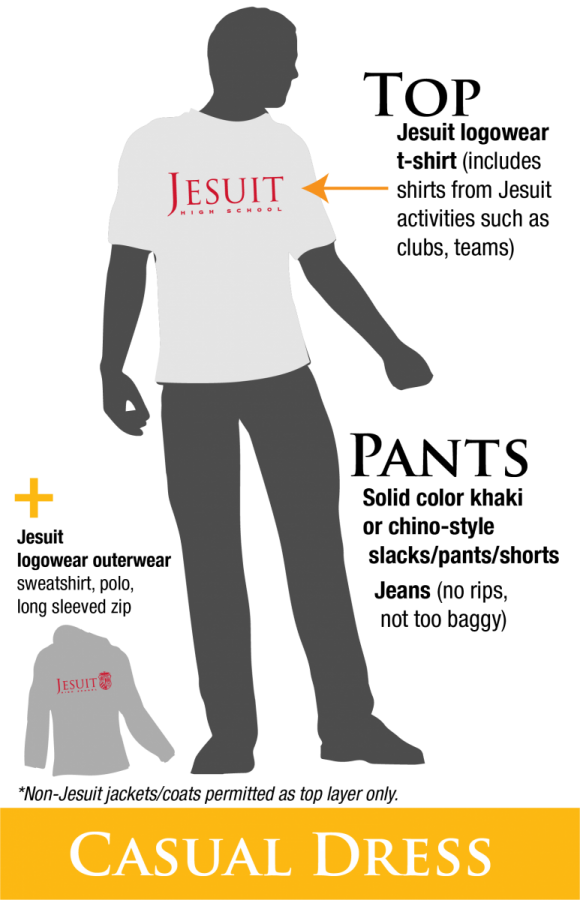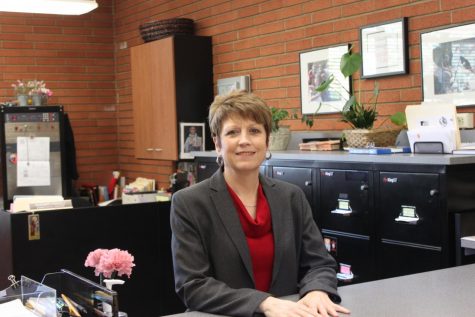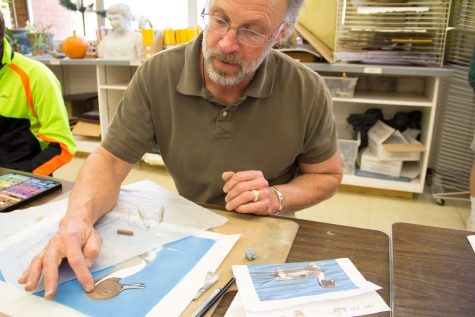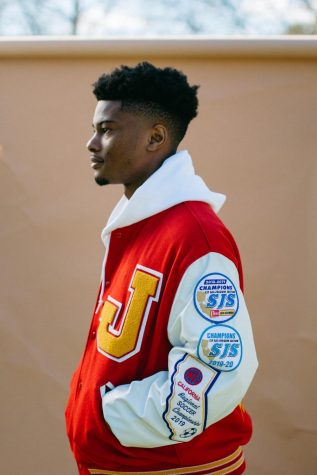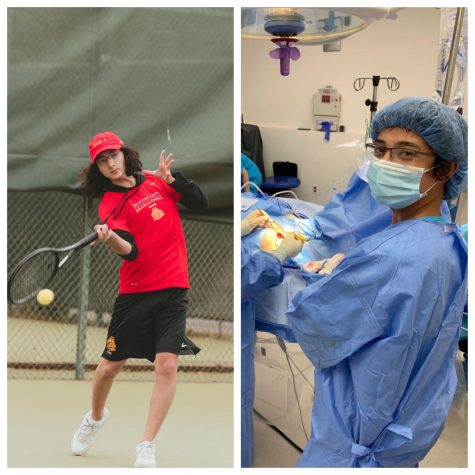Behind the Dress Code
Graphic by Jesuit Communications
While in distance learning, Jesuit has loosened some of its dress code requirements as students aren’t required to wear Jesuit polo shirts. Students can wear any school authorized apparel which includes Jesuit T-shirts and sweatshirts.
Despite classes moving online, athletics being pushed back, and a number of changes happening at Jesuit High School Sacramento due to the COVID-19 pandemic, there’s still one thing that remains the same: the dress code.
While in distance learning, Jesuit has loosened some of its dress code requirements as students aren’t required to wear Jesuit polo shirts. Students can wear any school authorized apparel which includes Jesuit T-shirts and sweatshirts. Hats, hood, or other head coverings are still not permitted without permission from the Dean’s Office.
To Jesuit Principal Dr. Michael Wood ’99, keeping a dress code is by design.
“The dress code was one of several elements we are using to simulate an actual school day for students,” Dr. Wood said. “It was important that we created a model of learning where students and teachers placed the appropriate emphasis and seriousness of the learning process. We found that the experience of the fourth quarter lacked the structure that so many students rely on to be successful. The dress code alone does not create this structure, but it does contribute.”
Jesuit Dean of Students Mr. LaRoddric Theodule has experienced both extremes of dress code policy. When stressing the importance of a dress code, he contrasts the difference in policy at two of his alma maters: Bellarmine College Preparatory and Florida Agricultural and Mechanical University.
“I went to Bellarmine in San Jose,” Mr. Theodule said. “[Bellarmine] was, and still is to a certain degree, about as lackadaisical as humanly possible on the dress code. Basically as long as you weren’t wearing something that was displaying drugs or alcohol, you were good to go. My college experience though, I wore a suit and tie every Tuesday and Thursday for classes. When you’re in a suit and tie all day in Florida in 110 degree heat it definitely creates a culture and a mindset that’s a little bit more serious.”
And because of his experience, Mr. Theodule wants students to have a serious mindset, even while learning online.
“There’s lots of research that supports the idea that dress codes in particular do help to shape a certain culture that tends to be a little bit more serious,” Mr. Theodule. “So in my experience, I’ve seen both spectrums. I would literally wear my pajamas to school and then I had to wear a suit and tie to school within a one to two year time period. I’ve personally felt the difference and I actually think it’s a good thing to interject some seriousness at the appropriate time. And for us right now school is our job so we want to treat it that way.”
Ms. Mary Harrison, the Administrative Assistant to the Dean, compares the mindset the dress code brings to athletics.
“My understanding is that Jesuit’s Administration put the dress code in place to help highlight the difference between “class time” and “non-class time,” Ms. Harrison said. “It’s like a football player or baseball player prepping for a game. Putting on the uniform makes you feel different. It’s a way to change your mindset and get ready to be in class.”
While a dress code during distance learning might seem excessive from a far, to the Jesuit administration, it’s crucial toward maintaining a serious culture among its student body.

